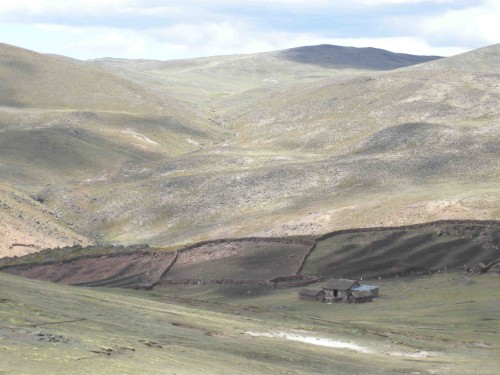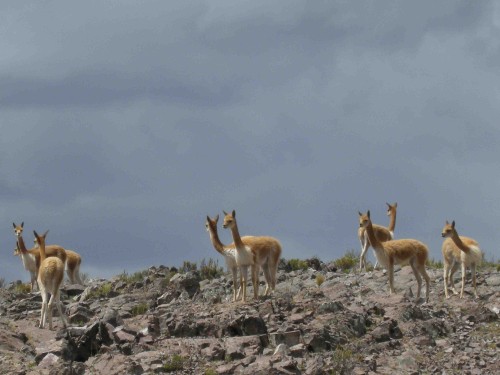Part Three: Pilpichaca, 4,000 metres above sea level.

We continued our research at a town located beyond the Ica Basin in a region, which feeds lagoons, whose water is connected by inter-basin transfer to the Tambo and Ica Rivers and feeds the agriculture along the gradient. High on the Peruvian altiplano, the landscape unfolds in broad valleys and rocky hills. Clouds rush across the blond, coarse grasses and low plants, tough enough to survive the extremes of winter at this altitude.
Few people live in the region, and those that do live simply, in stone or adobe houses, and many lack basic services. The altiplano has few trees, and traditionally, homes did not have any source of heat. People cooked with dried manure of alpacas and llamas, or thin twigs of the small shrubs that grow along the rivers. Although electricity lines have arrived, and small gas cylinders are now used to boil water and cook, the people are still adapted to live with few resources.

The town of Pilpichaca is a wide place on the highway between Ayacucho and the department capital of Huancavelica. A river runs a thin stream of water below the town, where women wash clothes in the brief hint of sunshine. The few people we spoke with here told us of herding alpacas, and how they brought the young animals into town to be slaughtered. Buyers come for the meat, and for the hides, which they shear to use the alpaca hair in clothing. A few government workers also live in the town full time at the public health clinic. They reiterated that malnutrition is high in the region because people sell the meat rather than feed it to their families, and the highway has brought many cheaper, processed foods to the town. A few women only spoke Quechua, and a young girl translated for us.
We ate alpaca-stomach soup with white corn for lunch. A sudden rain swept through, chilling the town completely, and I felt the deep cold penetrate. No heat. Only a few blankets to keep away the cold. We decided not to stay the night, and caught a ride to sleep at lower elevations. As we drove, we saw alpacas on benches below, gathered by their herders into stone corrals for the nights. We saw scattered groups of the native, wild, more delicate vicuña, a species protected now by the Peruvian government. They graze on the course grasses and low plants of the altiplano, where winds and snows keep the temperatures low year-round. Only those of resilient characters can survive in such landscapes. We were not made of such fibre, to live and thrive where the air is thin, the landscape is immense, the people are few. What does water, food and energy security mean here? Places all along the gradient seem to have fallen into a gap of insecurity, between highly self-sufficient traditional practices and a world where material goods, modernity, comfort, efficiency and technology have yet to completely arrive.
More ‘Notes from an extreme gradient’:
